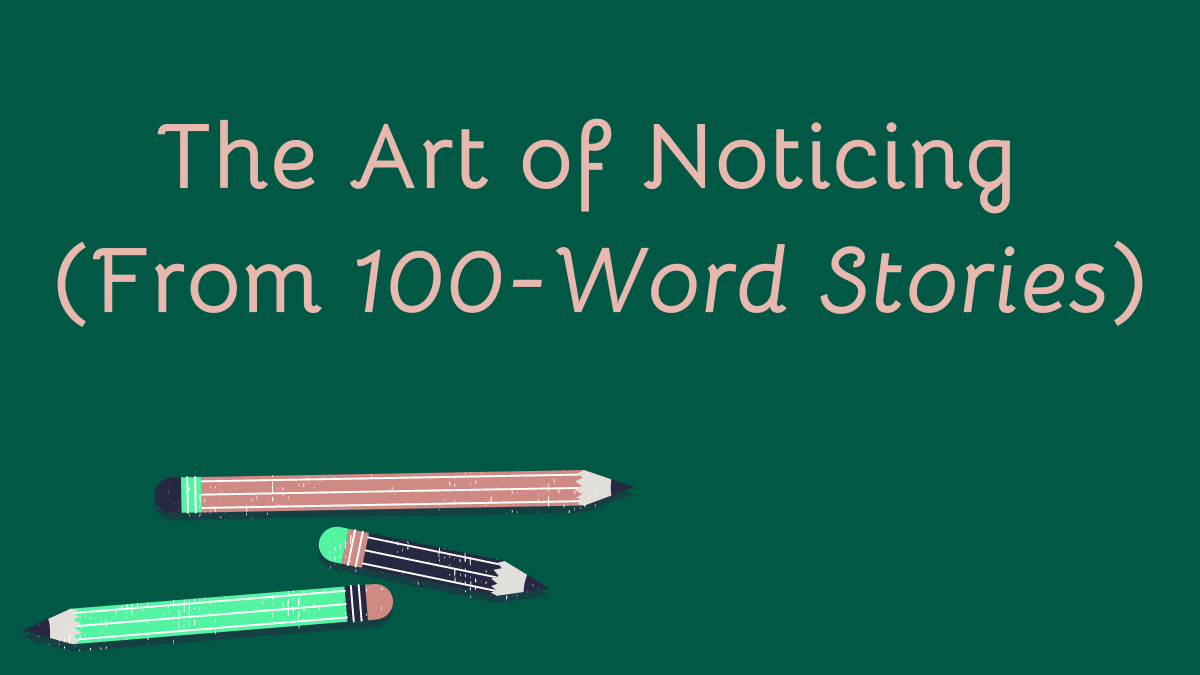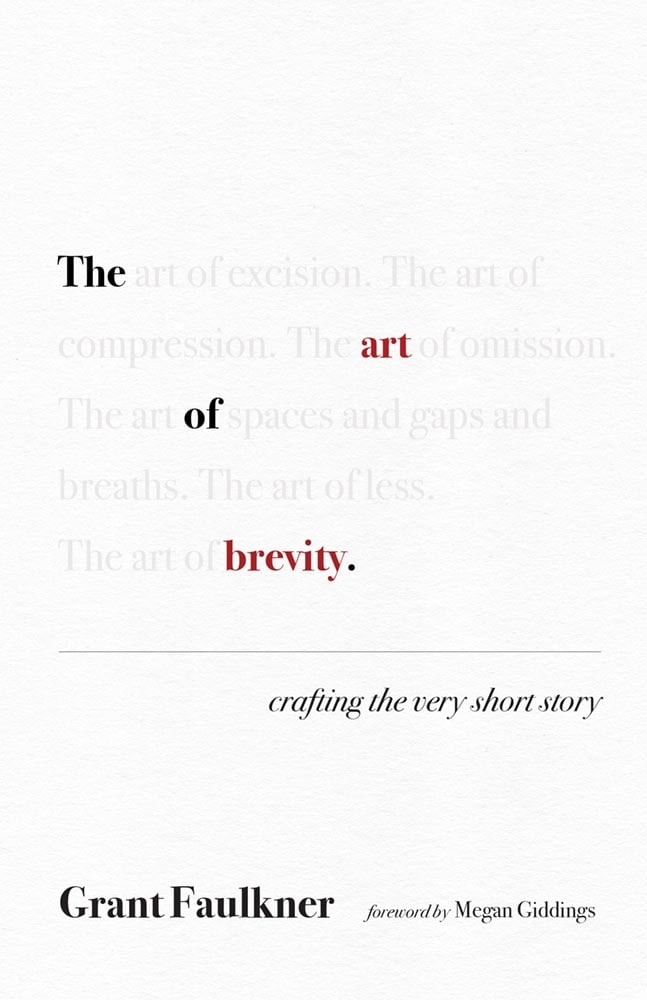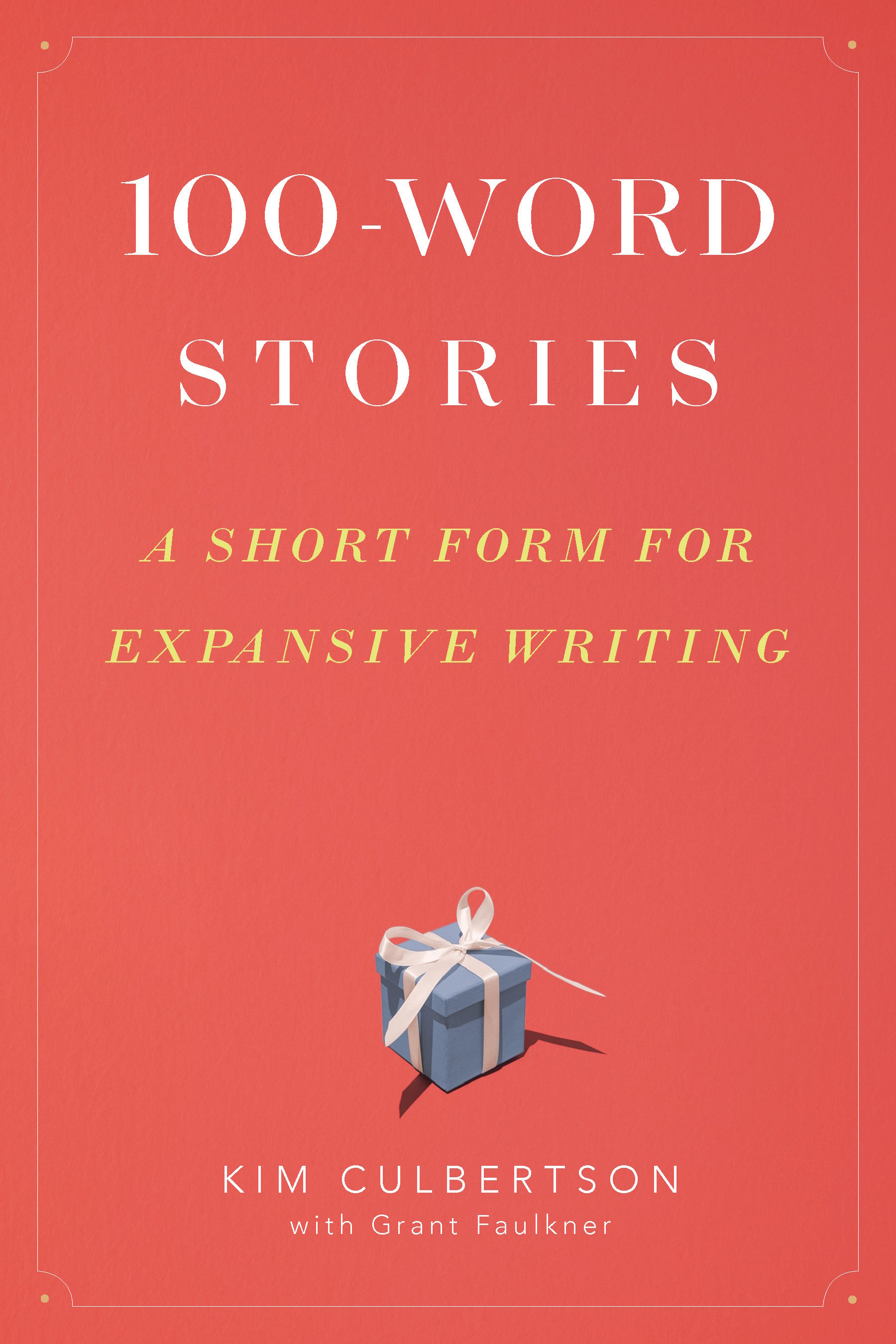
The following is an adapted excerpt from Grant Faulkner’s The Art of Brevity and an exercise from 100-Word Stories.
***
Try to Find Silence
 Sound emanates. It slithers. It wafts. It envelopes. It hovers. It pricks. It meanders. It circles. But it doesn’t stay. Sound is always moving, leaving a residue, like the smoke of a cigarette, particles dispersing, evaporating. Our world is driven by sound.
Sound emanates. It slithers. It wafts. It envelopes. It hovers. It pricks. It meanders. It circles. But it doesn’t stay. Sound is always moving, leaving a residue, like the smoke of a cigarette, particles dispersing, evaporating. Our world is driven by sound.
Writers are often advised to go into the world to observe people and places to gather descriptive details to animate their prose. They’re rarely advised to study silence. Try to find silence.
Silences Contain Subtext
 Silences contain subtext. And the subtext of silence is a breeding ground for stories.
Silences contain subtext. And the subtext of silence is a breeding ground for stories.
I learned this from life before I learned it from stories. When I was young, too young to have good communication skills, I once dated a woman who tended to run out of rooms and slam doors behind her when we got into arguments. The overt code of any slammed door is, “I’m angry at you, I don’t want you in my life.” The true message, though, is usually, “You’ve upset me, and you’d better run after me and make everything better.” I always ran after her, but after several such arguments, I decided that slamming a door was an immature act, and I felt humiliated to always be in the role of running after her, so I decided that if you run out of a room and slam the door, you should have to live with your action.
After she slammed the door during our next argument and I didn’t run after her, the silence began to crescendo. The silence became a wall. The silence became a yearning. The silence became a sword. The silence spawned stories and emotions and thoughts that wedged their way between us, one of us in flight, but both of us waiting.
In such a moment, one story layers itself on top of another. The silence rewrites stories on the brain’s synapses, strumming differing chords of memory and hopes and feelings, the echoes of so many other somethings. All of life is lived in the sphere of suggestions, juxtapositions of moments, none of them clearly delineated. An echo shifts the original sound, creating new textures, new surfaces, new meanings.
The Art of Noticing (from 100-Word Stories)
 Specific, sensory detail is at the heart of rich writing. It’s what moves a story from telling to showing.
Specific, sensory detail is at the heart of rich writing. It’s what moves a story from telling to showing.
I like to tell my students that in all writing (not just with this form, but with all writing), a writer is always “noticing.” We are noticing the specific senses that allow us to experience our world; we are noticing the way people interact with each other, the way they speak to each other (or don’t); we are noticing all the small, bright specific things that make our world beautiful and interesting and heartbreaking. This noticing (and the specific choices we make because of it) allows us to create unique, vibrant worlds in small spaces, and these worlds begin at the sentence level.
***
Listen to Kim Culbertson and Grant Faulkner discuss how flash fiction fosters agency and connection in the classroom on the Heinemann podcast.
Check out Grant Faulkner's The Art of Brevity here.
With elegant prose, deep readings of other writers, and scaffolded writing exercises, The Art of Brevity takes the reader on a lyrical exploration of compact storytelling, guiding readers to heighten their awareness of not only what appears on the page but also what doesn't.
You can purchase 100-Word Stories here:
Grant Faulkner is the co-founder of 100 Word Story and the Flash Fiction Collective and an Executive Producer on the upcoming TV show, America’s Next Great Author. His book The Art of Brevity was released in February 2023. He's also published Fissures, a collection of 100-word stories; All the Comfort Sin Can Provide; and Pep Talks for Writers: 52 Insights and Actions to Boost Your Creative Mojo. His stories have appeared in dozens of literary magazines, including Tin House, The Southwest Review, and The Gettysburg Review, and he has been anthologized in collections such as Norton’s New Micro: Exceptionally Short Fiction and Best Small Fictions. His essays on creativity have been published in The New York Times, Poets & Writers, LitHub, Writer’s Digest, and The Writer. Find Grant online on Facebook, Twitter, and Instagram. Listen to his podcast Write-minded and subscribe to his newsletter Intimations: A Writer's Discourse.
Kim Culbertson is a veteran English teacher and the award-winning author of five YA novels. Her titles Catch a Falling Star; The Possibility of Now; and The Wonder of Us were Scholastic book club selections. Kim sits on the Writers Council for National Writing Project and works as a Fiction mentor with Dominican University of California’s MFA in Creative Writing.




